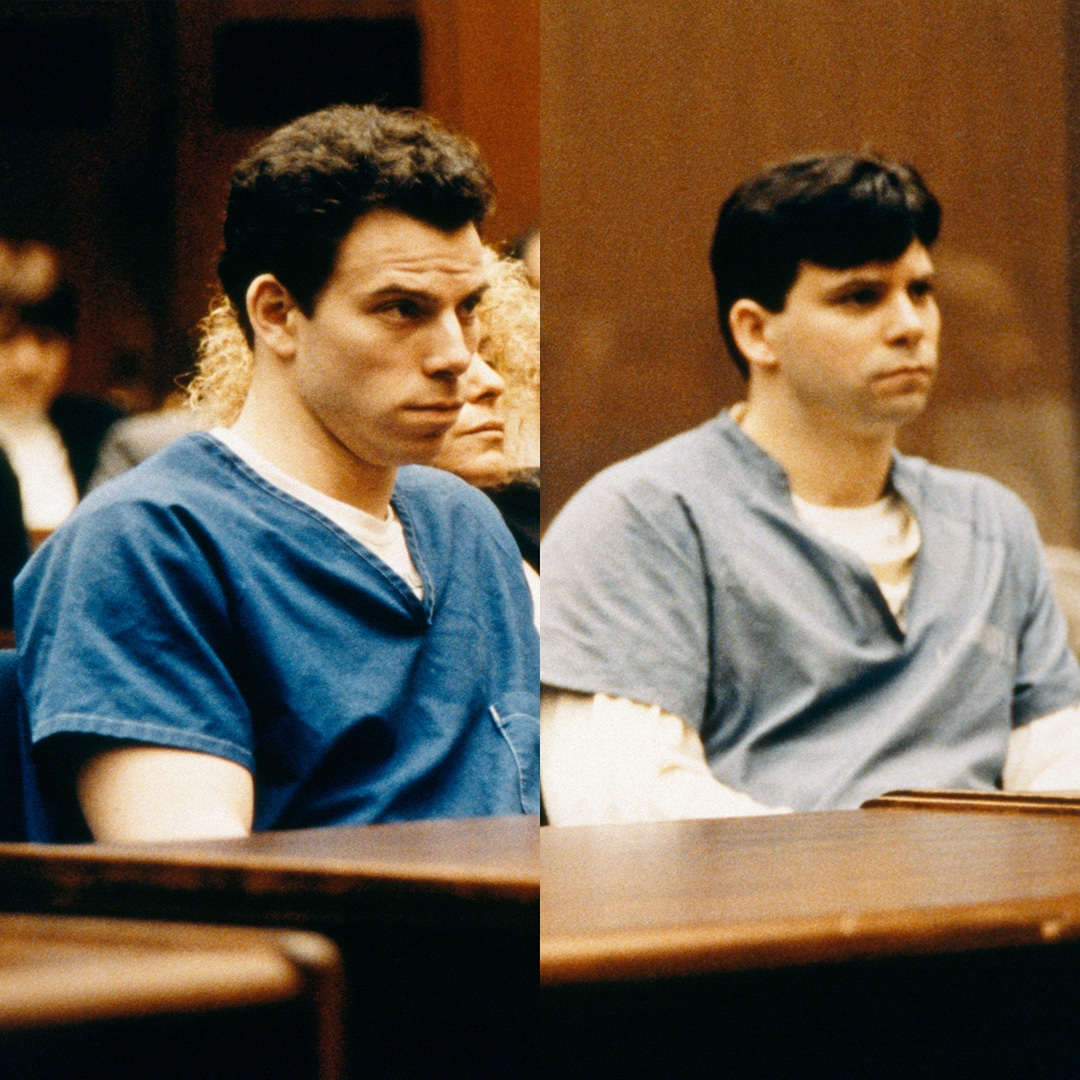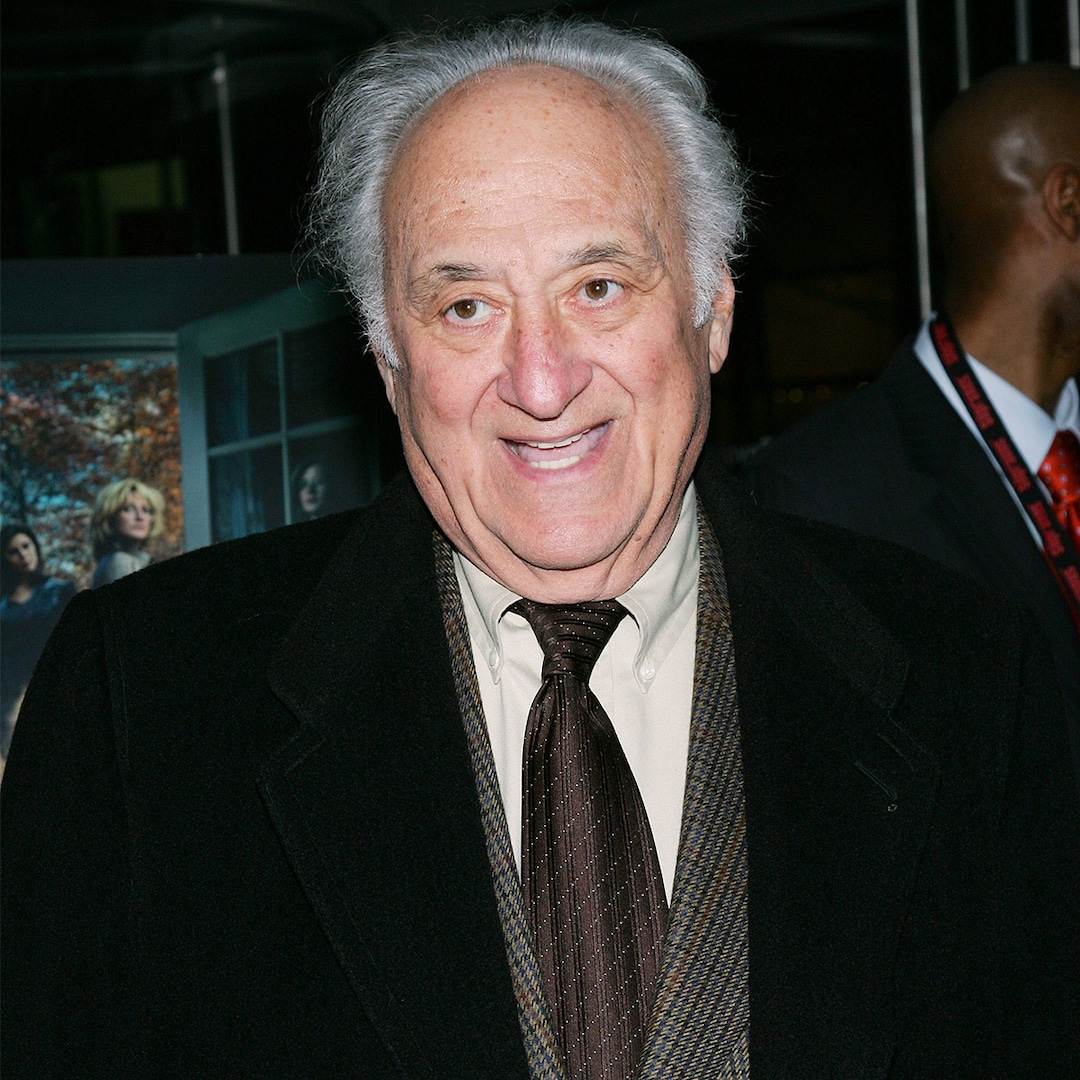Erik Menendez’s Wife Tammi Menendez Slams Parole Hearing as a “Complete Setup”
What Erik Menendez and Lyle Menendez did on the night of Aug. 20, 1989, was never the real question.
Rather, why did the Menendez brothers kill their parents, Jose Menendez and Mary Louise “Kitty” Menendez?
Lyle and Erik maintain that their father abused them, their mother abetted him with her silence and they feared for their lives. Their supporters, including a number of family members, have become increasingly outspoken in their beliefs that the siblings should not spend the rest of their lives in prison.
So far, the California Parole Board does not agree, rejecting the idea of releasing either Erik, 54, or Lyle, 57, during respective Aug. 21 and Aug. 22 hearings.
“This is a tragic case,” Parole Commissioner Robert Barton said after denying parole for Erik, per the Los Angeles Times. “I agree that not only two but four people were lost in this family.”
While it’s now been 36 years since the brothers gunned down their parents at their Beverly Hills home, even a remote chance of walking free wasn’t a reality until May, when they were resentenced to life in prison with the possibility of parole.
And their quest may not have even come this far if not for the Emmy-nominated Netflix series Monsters: The Lyle and Erik Menendez Story, which got people talking—including Erik himself.
“I believed we had moved beyond the lies and ruinous character portrayals of Lyle, creating a caricature of Lyle rooted in horrible and blatant lies rampant in the show,” Erik wrote in a message posted to his wife Tammi Menendez‘s X account on Sept. 19, when the show premiered. “I can only believe they were done so on purpose.”
California Department of Corrections via AP
He called it a “horrible narrative” shaped by “vile and appalling character portrayals” of himself and Lyle, as well as “disheartening slander.”
Executive producer Ryan Murphy had a different take.
“The Menendez brothers should be sending me flowers,” Murphy told The Hollywood Reporter in an interview published Oct. 1. “They haven’t had so much attention in 30 years.”
Menendez attorney Mark Geragos didn’t disagree, allowing that even salacious coverage may have helped.
“When the Ryan Murphy series came out,” the lawyer said during an Oct. 16 press conference, “it was such a caricature of them that the pendulum-swing backlash actually created a focus on it and people then took a look.”
“People” included then-Los Angeles County District Attorney George Gascón, who ultimately agreed that parole should be on the table and registered his support for the brothers’ request for clemency before being voted out of office in November. His replacement, Nathan Hochman, did not agree, but ultimately the resentencing hearing went forward.
What has never been in dispute, meanwhile, is that at around 10 p.m. on the night in question, Jose, 45, was shot point-blank in the back of the head with a 12-gauge shotgun. He was found in the den of the family’s 9,000-square-foot home on Elm Drive, where he and Kitty, 47, his wife of 26 years, had been watching a movie.
She was found lying in a pool of blood in the hallway, shot in the arms, chest and face. She and Jose were also each shot in the kneecap.
A bodyguard Lyle hired testified during the brothers’ 1993 murder trial that his client said his parents were “murdered by either the cartel or the mob and he was in fear for his life.”
Bob Riha, Jr./Getty Images
As they later admitted, Lyle and Erik got in the car and dumped the guns they used to shoot their parents somewhere off of Mulholland Drive, then threw the spent shotgun shells and their bloody clothes in a dumpster at a gas station. They bought movie tickets in Century City for a film they didn’t see, then went to Santa Monica, where they unsuccessfully tried to find one of Lyle’s friends who could serve as an alibi.
They drove back home, where then-21-year-old Lyle called 911 at 11:47 p.m., sobbing to the dispatcher, “Somebody killed my parents!”
He and Erik told police they’d gone to the movies intending to see the latest Bond film License to Kill, but the line was too long so they saw Batman. Afterward, they said, they went to the annual Taste of L.A. festival in Santa Monica and then returned home, where they found their parents dead.
In the week immediately following the killings, Lyle—a Rolex-sporting prep school grad who had been suspended from Princeton for plagiarism—returned to New Jersey, where he test drove a Porsche and went shopping for clothes. He also put a put a $300,000 down payment on a restaurant that specialized in buffalo wings in Princeton, N.J., where he and Erik were born, later that year.
“‘Well, I’ve been waiting so long to be in this position, that I’m prepared for it,'” Lyle said at his parents’ wake, according to the testimony of pal and Princeton classmate Glenn Stevens.
Los Angeles Times (Getty Images)
During this time, 18-year-old Erik hired a private tennis coach and the brothers tooled around L.A. in their late mother’s Mercedes convertible. They went to London and then to the Caribbean on vacation. They rented a couple of penthouses in Marina del Rey, Calif.
It was later said that the Menendez brothers blew through about $1 million in six months. (“I don’t think it’s understandable,” Lyle said in trying to explain the spending spree to ABC News’ Barbara Walters. “People react to it, to a traumatic event like that, in different ways.”)
It was Erik who ended up telling his therapist, Dr. Jerome Oziel, on Oct. 31, 1989, that he and Lyle killed their parents. Lyle joined them later that day, and Oziel described his patient’s older brother as being angry and menacing.
Oziel met again with both siblings on Nov. 2, and Lyle told the psychologist that he and Erik had talked about killing him, the therapist testified.
VINCE BUCCI/AFP via Getty Images
Oziel testified that his ex-girlfriend had tipped off police, after he went home on the night of Oct. 31 and “told her what I needed to tell her.”
LAPD officers arrested Lyle on March 8, 1990. Erik surrendered upon returning to L.A. three days later after playing in a tennis tournament in Israel.
But the question of doctor-patient privilege helped prevent the case from going to trial for years.
A judge ruled that, by threatening Oziel, Lyle had voided the brothers’ right to confidentiality. The defense’s appeal arguing that what Erik told his therapist was private was granted, then overturned by the California State Supreme Court, which re-allowed Oziel’s tape-recorded notes—but not the confessions themselves—into evidence.
Lyle and Erik were indicted on first-degree murder charges in December of 1992. The L.A. County District Attorney’s Office initially said prosecutors would seek the death penalty.
Ted Soqui/Sygma via Getty Images
Two years before the O.J. Simpson murder trial would become the most talked about trial of all time, prompting 24/7 media coverage and a new era for cable news, the Menendez brothers’ first murder trial—also televised pretty much in its entirety on Court TV—captivated the nation.
It was only then that the defense revealed its case, alleging that Lyle and Erik had acted in self-defense after being beaten and sexually abused for years.
Lyle testified in September 1993 that both Jose and Kitty sexually abused him, his father when he was between 6 and 8 years old. Kitty would bathe him and have him get into bed with her up until he was 13, he said in court, after which she continued to “harass” him and be inappropriate. His parents were violent with him into his late teens, Lyle said. When he started dating, he added, Kitty would call his girlfriends “gold diggers” and “bimbos.”
Lyle said on the stand that, five days before the murders, Kitty ripped off his hair piece during an argument. He testified that was the first time Erik saw him without his toupee, and that his younger brother cried and told Lyle that Jose was still sexually abusing him.
“I had dismissed what had happened to me as something that happened to little boys,” Lyle said in court. He and Erik planned to confront their dad together, he testified.
When he warned Jose to leave Erik alone or he’d expose him, their father replied, “‘We all make choices in our life. Erik made his. You made yours,'” Lyle testified. The defendant continued, “I thought we were in danger. I felt he had no choice. He would kill us. He’d get rid of us in some way. Because I was going to ruin him.”
Asked why he and Erik didn’t go to the police, Lyle said he didn’t believe the cops could help because “my dad is a rich guy with a lot of power.”
On the night of the murders, Lyle testified, Jose told him to wait alone in his room upstairs. Convinced their parents were planning to kill them, they decided to strike first, Lyle told the court. So, he said, he and Erik grabbed the shotguns they’d bought in San Diego out of their car, headed into the den and opened fire.
Asked why they didn’t just tell the police what happened, Lyle testified, “We had decided before that we wouldn’t.”
Oziel testified without the jury present that the brothers seemed “immensely pleased with the excitement of pulling off these…crimes without being caught.”
The psychologist then testified before the jury in August 1993 that the brothers told him they had planned to kill their father because of his domineering ways, but realizing their mother would then be a witness, decided to kill her too.
The brothers thought they had committed the “perfect crime,” Oziel said on the stand, testifying that the brothers told him about reloading their guns while their mother tried to crawl away.
The brothers were tried simultaneously but with separate juries—both of which ended up deadlocked at the end of the first trial in January 1994.
Their retrial, in front of one jury, began in October 1995. L.A. County Superior Court Judge Stanley Weisberg did not allow cameras in his courtroom, nor did he allow the defense to argue that the brothers believed their parents were going to kill them if they didn’t strike first.
Erik testified again, but Lyle did not, and on March 20, 1996, the brothers were each found guilty of two counts of first-degree murder, with special circumstances, and conspiracy to commit murder.
A jury opted to spare their lives during the penalty phase, recommending life in prison without the possibility of parole.
“Lyle is relieved because he wants to live,” defense attorney Charles Gessler told reporters after hearing the jury’s decision.
“On the good side, I would say that they’re such considerable human beings that they’re going to find a way to be productive,” added Erik’s attorney Leslie Abramson. “And in fact some of the jurors were saying that too. It was their expectation that they would both find a way to contribute to society.”
Juror Lesley Hillings told the Los Angeles Times afterward, “We did think there was psychological abuse to some extent. I think most of us believed that. Sexual abuse? I don’t think we’ll ever know if that’s true or not.”
The brothers’ last memorable appearance together was a jailhouse interview they gave to Barbara Walters which aired June 28, 1996, just a few days before they were formally sentenced.
Erik insisted, “I’m just a normal kid,” prompting Walters’ infamous response: “Oh, Erik, you’re a normal kid who killed your parents.”
Asked about the public perception of him and his brother as monstrous spoiled brats, Erik said, “That’s not who I am, but I can’t defend that. Because I came from a family of wealth, that doesn’t make me spoiled.”
Added Lyle, “I would be surprised if anybody who was present at the trial and saw the whole thing, rather than snippets on the news, would feel that.”
CAROLINE BREHMAN/EPA-EFE/Shutterstock
The Menendez brothers were then separated, Erik sent to Folsom State Prison (he was later transferred to Pleasant Valley State Prison) and Lyle to Mule Creek State Prison in Ione.
An appellate court upheld their convictions in February 1998, and petitions for review were also denied that May.
Lyle and Erik didn’t see other again until April 2018, two months after one of Lyle’s half-dozen transfer requests was granted and he was moved into the same housing unit as Erik at Richard J. Donovan Correctional Facility in southern San Diego County.
“I burst into tears. I had to walk a long way to see him…when he got brought over in a van, I was able to see him coming off and meet with him and I wasn’t sure how I would react,” Lyle told DailyMailTV of their emotional reunion after 22 years apart. “I just felt a lot of adrenaline and just, I ended up bursting into tears.”
But seeing Erik was “just wonderful,” he said, explaining, “I don’t know that I really ever recovered from [being separated]. It’s like a healing of a wound to be reunited. It’s been 25 years since the trials, I think that’s long enough.”
And while Lyle said in a 2017 prison interview that what they did “seems unimaginable” now, the brothers have not wavered from the motive they gave three decades ago.
“In my mind, leaving meant death,” Erik told the parole board in August 2025, when asked why he didn’t report his father to police. “My absolute belief that I could not get away. Maybe it sounds completely irrational and unreasonable today.”
And over time, “my mom had shown she was united with my dad,” Erik said. “On that night I saw them as one person. Had she not been in the room, maybe it would have been different.”
Acknowledging the many relatives rallying for Erik’s release, Parole Commissioner Barton said, “Two things can be true. They can love and forgive you, and you can still be found unsuitable for parole.”
Among the loved ones who want to see Lyle and Erik go free: The women who married them while they were behind bars. Read on for more on the Menendez brothers’ wives:
Kim Kulish/Sygma via Getty Images
Anna Eriksson
Lyle Menendez, then 28, married model and salon receptionist Anna Eriksson on July 2, 1996, the day he and brother Erik Menendez were sentenced to life in prison without the possibility of parole for the 1989 double murder of their parents, Jose and Kitty Menendez.
Anna started writing to Lyle in 1993 during his first trial, which ended in a mistrial, and then moved to California to be near him the following year. She became a reliable presence at the months-long retrial that began in 1995 and resulted in convictions in March 1996, according to the Los Angeles Times.
They couldn’t take their vows in person, however, Lyle instead taking the plunge over speaker phone, the groom in custody and the bride in the office of defense attorney Leslie Abramson.
He seemingly hoped to be able to wed Anna in person, once he knew where he’d end up.
“We do have a marriage proceeding,” California Correctional Institution spokesman Lt. Jack Pitko told the LA Times in September 1996 once Lyle and Erik had been ordered to separate prisons. “There’s a waiting list…But I don’t see why he shouldn’t be able to get married if he follows all the rules.”
Anna filed for divorce in 2001 after, according to multiple reports from the time, she allegedly found out Lyle was exchanging letters with other women.
Oxygen
Rebecca Sneed
Lyle didn’t rush into anything when he married journalist Rebecca Sneed, reportedly 33 at the time, in November 2003: He had known her for 10 years, first through letters and eventually from in-person visits, a prison spokesperson told the Associated Press in confirming the nuptials.
The ceremony took place at Mule Creek State Prison near Sacramento, where Lyle resided until he was reunited with Erik in 2018 at the Richard J. Donovan Correctional Facility in southern San Diego County.
“Our interaction tends to be very free of distractions and we probably have more intimate conversations than most married spouses do, who are distracted by life’s events,” Lyle told People in 2017. At the time, Rebecca was living in Sacramento and was said to visit weekly.
“We try and talk on the phone every day, sometimes several times a day,” Lyle added. “I have a very steady, involved marriage and that helps sustain me and brings a lot of peace and joy. It’s a counter to the unpredictable, very stressful environment here.”
Rebecca “put up with a lot,” he acknowledged. “But she has the courage to deal with the obstacles. It would be easier to leave, but I’m profoundly grateful that she doesn’t.”
Kim Kulish/Sygma via Getty Images
The bloom has since come off the rose, however: Ahead of a decision on whether Lyle and Erik should be resentenced and possibly set free in the near future, Rebecca confirmed that she and Lyle are separated.
“Lyle and I have been separated for a while now but remain best friends and family,” she wrote Nov. 22 on her official Facebook page. “I continue to run his Facebook pages, with input from him, and I am forever committed to the enduring fight for Lyle and Erik’s freedom, as has been so evident over the years.”
She added, “I’ll continue to update you all on the progress of the case because I believe we all have the common goal of seeing the guys walk free! I will never stop fighting for them.”
And because tabloid rumors don’t stop outside the prison gates, the post also noted, “This is NOT a cheating scandal.”
Chris Morton/Getty Images
Tammi Saccoman
Erik’s wife Tammi Menendez, now 62, was married to Chuck Saccoman when she first spied the younger Menendez brother on TV in 1993 and felt a special place in her heart for the 22-year-old murder defendant.
As she later told People, she informed her husband she was going to write to Erik and Chuck gave her his blessing.
“I saw Tammi’s letter and I felt something. I received thousands of letters, but I set this one aside. I got a feeling,” Erik told the publication. “And I wrote her back. Tammi and I continued to correspond. I enjoyed writing to her. It was a slow friendship. It was special to me because it was not associated with the trial and the media. Tammi was someone not in the craziness.”
However, as Tammi detailed in her 2005 book They Said We’d Never Make It: My Life With Erik Menendez, she doubted the brothers’ abuse defense at first. (And she told MSNBC that Erik mentioned having a girlfriend of several years early on.)
But in 1996, as Tammi has detailed in her book and interviews, she found out that Chuck had abused her teenage daughter from a previous relationship. (They also shared a then-9-month-old daughter.)
Chuck turned himself into police and died by suicide two days later, according to People.
Chris Morton/Online USA, Inc.
After Chuck died, “I reached out to Erik,” she told the publication in 2005. “He comforted me. Our letters started taking on a more serious tone.”
Tammi admitted she was “really nervous” when she finally met Erik in person at Folsom State Prison in August 1997.
“Erik had no idea what I looked like; I’d only sent him a tiny, 1-by-1 picture,” she explained. “But when he walked into the room, he was so full of life, he hopped down the stairs. It was like I was meeting an old friend.”
They married in 1999, a Twinkie serving as their wedding cake.
New Galen Publishing
And they’ve been together ever since, though Tammi has acknowledged that the lack of conjugal visits can be tough.
“A kiss when you come in, a kiss when you leave,” she described the routine on MSNBC in December 2005. ‘You can hold hands and that part of it is very difficult, and people don’t understand.”
Erik said he tried not to think about what was then the likelihood that he would never get out of prison.
“Tammi is what gets me through,” he told People in 2005. “I can’t think about the sentence. When I do, I do it with a great sadness and a primal fear. I break into a cold sweat. It’s so frightening I just haven’t come to terms with it.”
But on a more optimistic note, Tammi had also taught him “how to be a good husband,” Erik said. “There is no makeup sex, only a 15-minute phone call, so you really have to try to make things work.”
For the latest breaking news updates, click here to download the E! News App

















Leave a comment